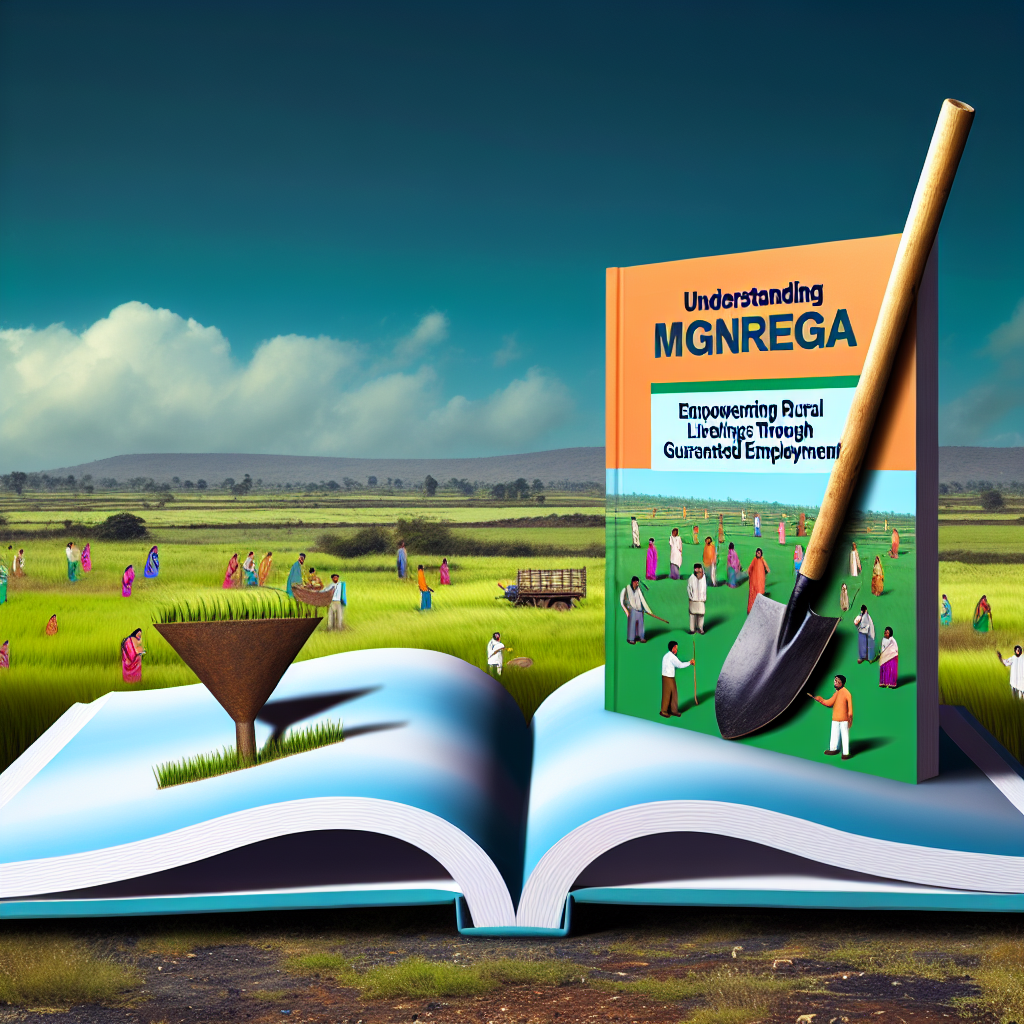Copyright @ 2023 www.digimitr.com. All rights reserved.

Understanding MGNREGA: Empowering Rural Livelihoods through Guaranteed Employment
Explore the key aspects of the government scheme titled “Understanding MGNREGA: Empowering Rural Livelihoods through Guaranteed Employment”. This scheme is managed by the relevant ministry and aims on providing benefits to eligible beneficiaries.
Here is a comprehensive overview:
The Mahatma Gandhi National Rural Employment Guarantee Act (MGNREGA) is a revolutionary step in empowering rural livelihoods in India. Enacted in 2005, it aims to enhance the livelihood security of rural households by providing at least 100 days of unskilled wage employment in a financial year to every rural household whose adult members volunteer to do unskilled manual work. By establishing a legal guarantee to work, MGNREGA not only alleviates poverty but also enhances the dignity of labor.
Eligibility Criteria
To avail of the benefits under MGNREGA, certain eligibility criteria must be met. The primary eligibility is that the applicant must be a resident of a rural area. Households can apply for the scheme if they meet the following conditions:
- Adult Members: All adult members aged 18 years and above of a household can register.
- Identity Proof: Applicants must provide proof of identity, such as aadhar cards or any government-issued identification.
- No Asset Limitation: There are no restrictions based on the assets of the household, making it accessible for all economically weaker sections.
Registration is essential for the households wishing to avail of MGNREGA benefits, and every registered household is entitled to demand work.
Key Features and Benefits
One of the most significant features of MGNREGA is the legal guarantee of employment. If the work is not provided within 15 days of a demand for work, applicants are entitled to daily unemployment allowances. This promotes accountability and transparency in the employment generation process.
Additionally, the act supports various types of works aimed at enhancing livelihood security. The projects under MGNREGA primarily focus on water conservation, drought-proofing, irrigation, land development, and environmental restoration. By prioritizing these areas, the scheme contributes to sustainable rural development.
The benefits extend beyond just employment. MGNREGA plays a vital role in:
- Empowering Women: The act encourages female participation; at least one-third of the beneficiaries must be women.
- Reducing Migration: By providing employment opportunities in their locality, MGNREGA reduces rural-to-urban migration.
- Enhancing Rural Infrastructure: The projects undertaken benefit the local community, improving agriculture, water conservation, and overall infrastructure.
Application Process
The process to apply for MGNREGA benefits is straightforward. Eligible households need to follow these steps:
- Registration: Visit the Gram Panchayat (village council) office to fill the registration form. Local officials guide applicants through the process.
- Job Card Issuance: After verification, a job card is issued, which lists all adult members of the household eligible for work under MGNREGA.
- Demand for Work: Registered households can then formally demand work by submitting a written application to the local authorities or the Gram Panchayat.
- Work Allotment: Once the demand is approved, work is allotted, and the beneficiaries are expected to start within the stipulated timeline.
The entire process emphasizes transparency and accountability, ensuring that applicants receive their dues promptly.
Funding and Budget
MGNREGA is funded jointly by the central and state governments. The allocation of funds for the scheme is determined based on the previous year’s utilization, the anticipated demand for work, and the economic conditions of the rural sectors.
Every year, the Budget Allocation for MGNREGA is presented by the Finance Minister. The program’s funding is crucial to ensure the adequacy of resources for timely wage payments and the completion of projects. Regular audits and monitoring are carried out to ensure that the funds are utilized effectively.
Achievements or Impact
Since its inception, MGNREGA has made significant strides in improving rural livelihoods. By providing guaranteed employment, the scheme has effectively lifted millions out of poverty. Various studies and reports indicate that MGNREGA has led to:
- Increased Income Levels: Families that participate in MGNREGA see an increase in income, which has a multiplier effect on their overall standard of living.
- Economic Growth: Rural economies benefit from the enhanced spending capacity of families, which boosts local markets.
- Social Empowerment: Reduced gender inequalities have been noted with women taking up work roles, gaining economic independence.
Furthermore, with over 30 million households participating annually, MGNREGA stands as a testament to affirmative action for rural development.
Challenges
Despite its successes, MGNREGA faces several challenges. One major issue is the quality of work provided under the scheme. Inadequate planning and implementation can lead to substandard projects that do not meet the anticipated outcomes.
Additionally, bureaucracy and corruption remain persistent problems in the execution of the act. Issues such as delays in wage payments, lack of awareness among potential beneficiaries, and inadequate monitoring mechanisms hinder its effectiveness. Ensuring transparency and monitoring can help overcome these challenges.
Recent Updates
In recent years, significant updates have been made to streamline MGNREGA processes and expand its scope. The introduction of digital platforms for wage payments has reduced delays and improved transparency. Furthermore, the 2021-2022 budget highlighted an increase in MGNREGA funding, acknowledging its crucial role during the economic downturn caused by the COVID-19 pandemic.
Additionally, many states are piloting new initiatives such as skill development programs to enhance employability and improve the quality of projects undertaken under MGNREGA.
Conclusion
MGNREGA stands as a beacon of hope for rural communities in India. By guaranteeing employment, it significantly contributes to poverty alleviation and rural development. The act has not only provided financial security to millions but also worked towards building a robust rural infrastructure. Continuous monitoring, updates, and reforms can further enhance its impact, ensuring that it remains relevant and effective in empowering rural livelihoods.
FAQ
1. Who can apply for MGNREGA benefits?
Anyone residing in rural areas can apply, provided they meet the eligibility criteria, which include being part of a registered household with adult members willing to work.
2. What types of work are available under MGNREGA?
The scheme primarily focuses on unskilled manual labor involving projects like water conservation, drought-proofing, land development, and rural infrastructure projects.
3. How are wages determined under MGNREGA?
Wages under MGNREGA are set by the state government and can vary from state to state. They are typically revised annually to adjust for inflation and economic conditions.
For more information, check out official government site,
Official government website or relevant source not provided.
Stay updated on related schemes and initiatives using hashtags: #Understanding #MGNREGA #Empowering #Rural #Livelihoods #Guaranteed #Employment
Feel free to share about this scheme in the comments below!





